#american pokeweed
Photo
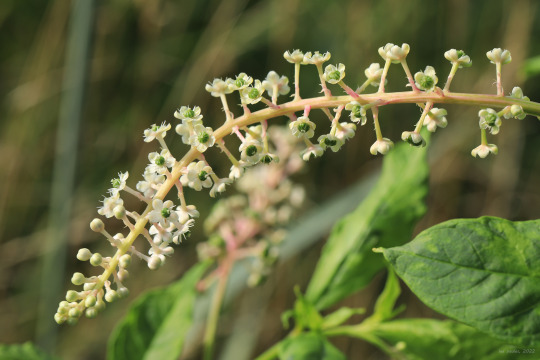
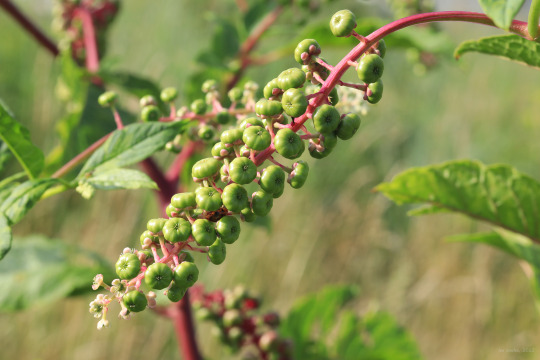

For those who’ve grown up in Appalachia, this gangly, bushy perennial herb with bright red stems, broad, crinkled leaves, and iridescent purple-blue berries needs no introduction. The young leaves and shoots of American pokeweed (Phytolacca americana) have historically been harvested by mountain folk in the spring and sauteed with bacon grease to make poke sallet. But the leaves and shoots must be properly cleaned and rinsed to remove their toxins. As pokeweed grows, it becomes increasingly more toxic - ingesting any part of the mature plant can cause respiratory failure and death in humans and livestock. The flowers and berries, which start out green and gradually turn purple-blue by late summer, have some wildlife value, but many people in the east consider the plant to be weedy. However, as it occasionally turns out, one person’s weed is another person’s ornamental - pokeweed has reportedly become a popular garden plant in Europe.
#appalachia#vandalia#west virginia#summer#berries#flora#phytolacca americana#american pokeweed#pokeweed#poke#poke sallet#eat at your own risk#culture#food that can kill you
47 notes
·
View notes
Text

bitches b like i just want some pokeweed berries for dye
3 notes
·
View notes
Photo

American Pokeweed by Marcus Pink on Flickr.
This work is licensed under CC BY 2.0.
#american pokeweed#phytolacca americana#cultivated#landscape#fruit#creativecommonsplants#creative commons#curators on tumblr#botany#plants#plant blog#plant photography#flickr#green#red
7 notes
·
View notes
Text
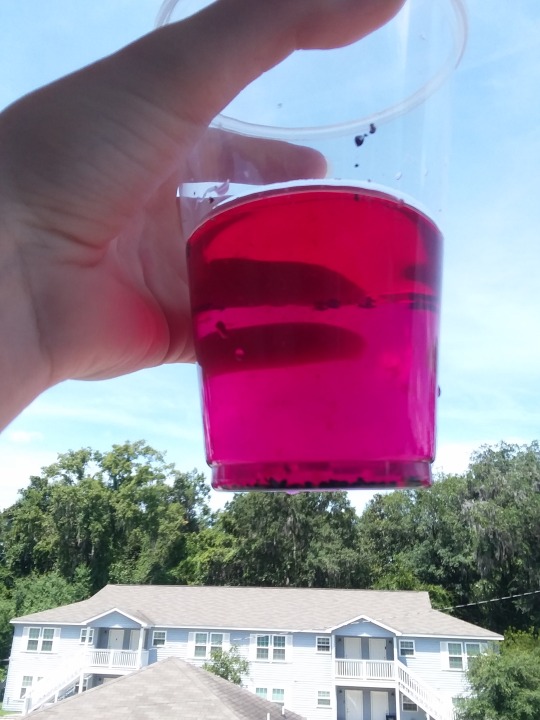
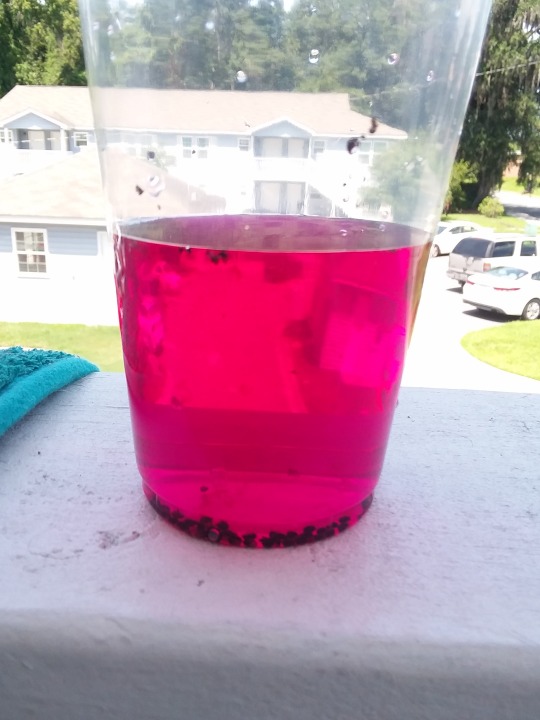
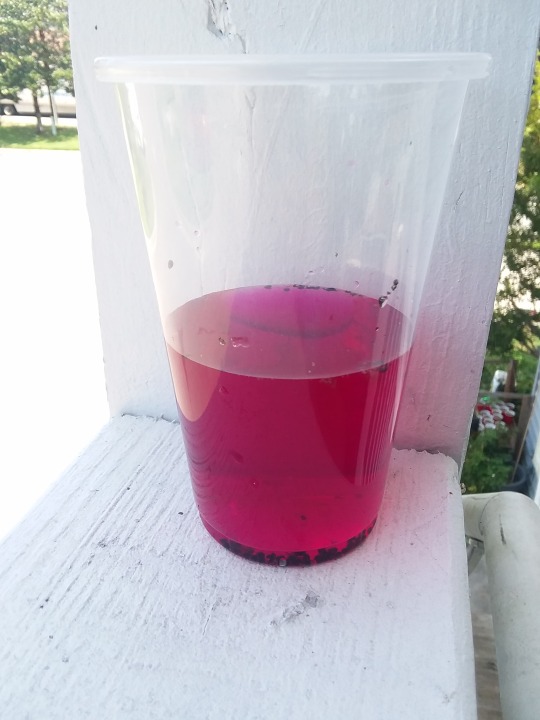

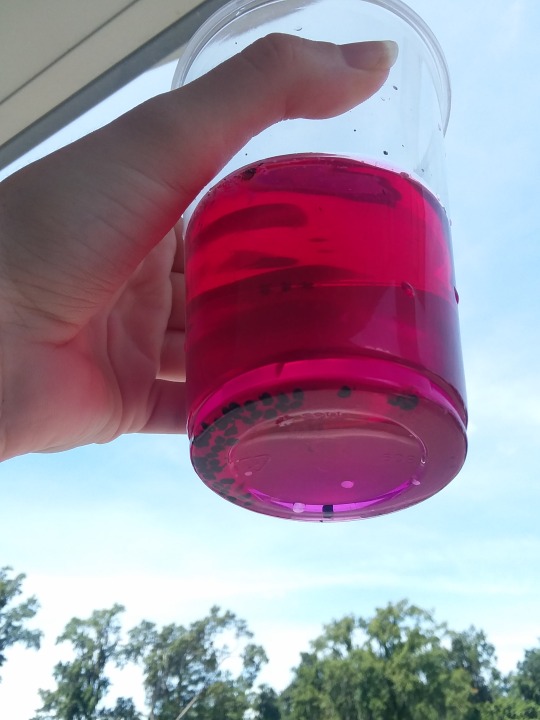

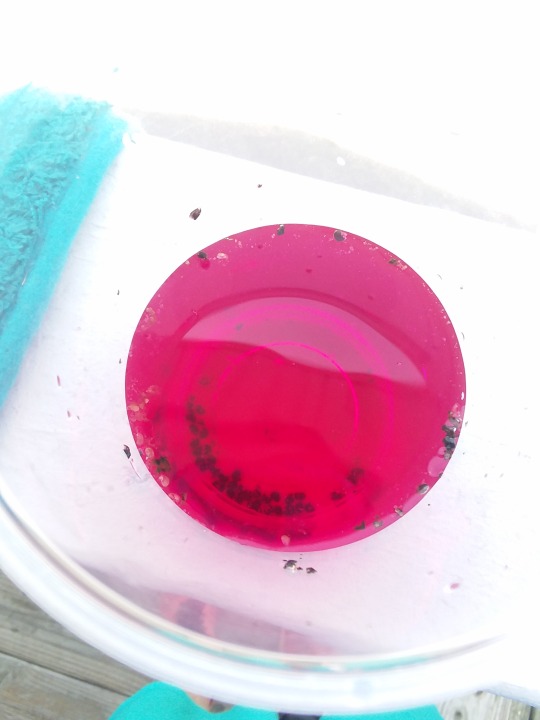

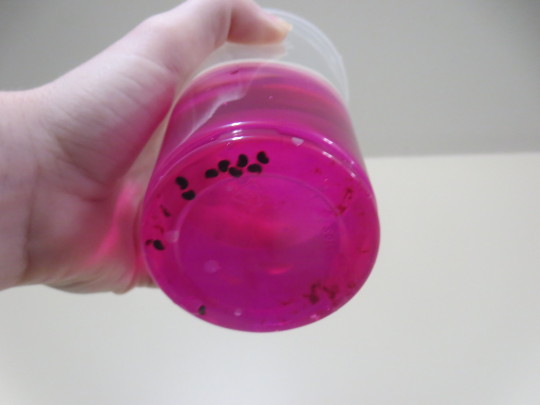
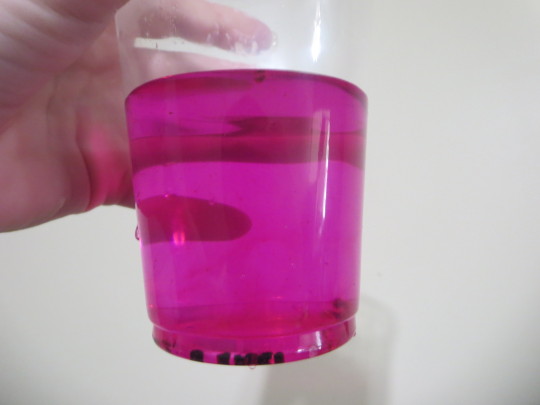



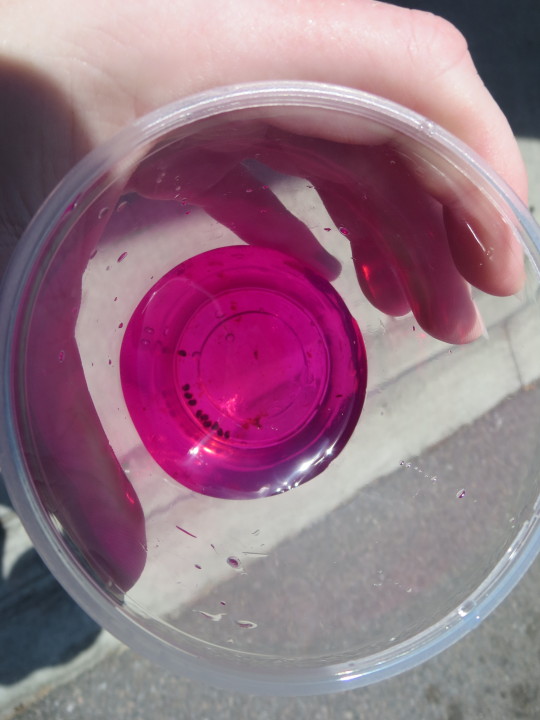
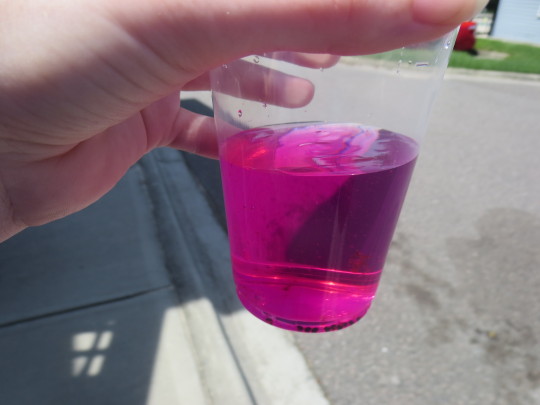
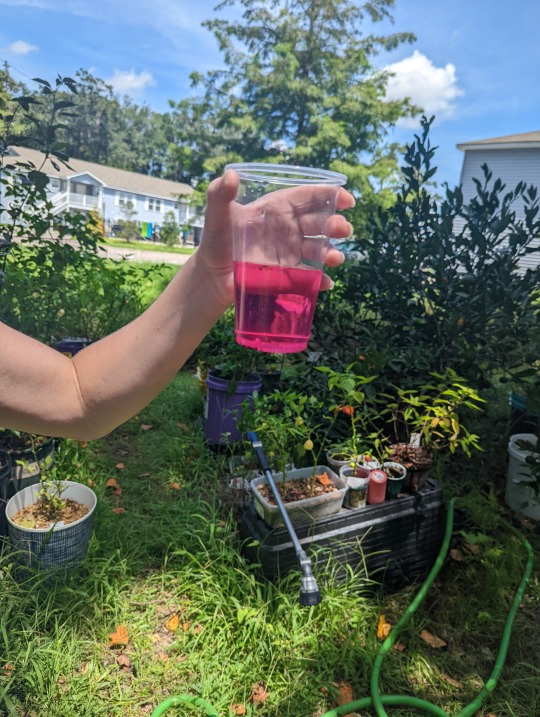
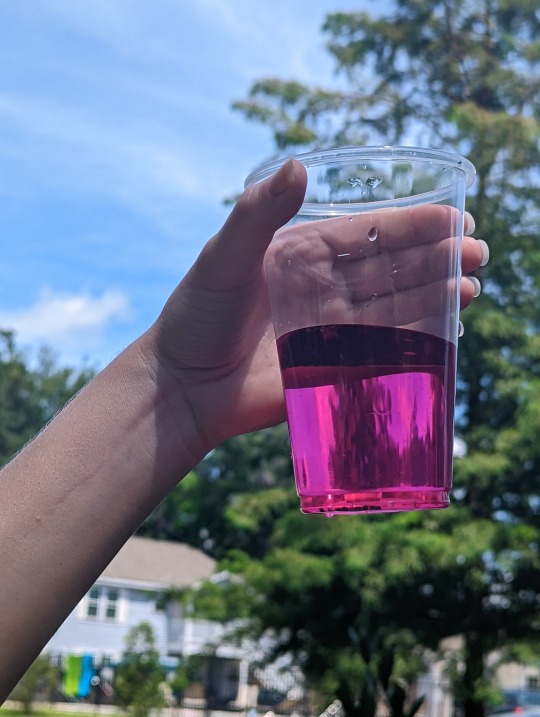
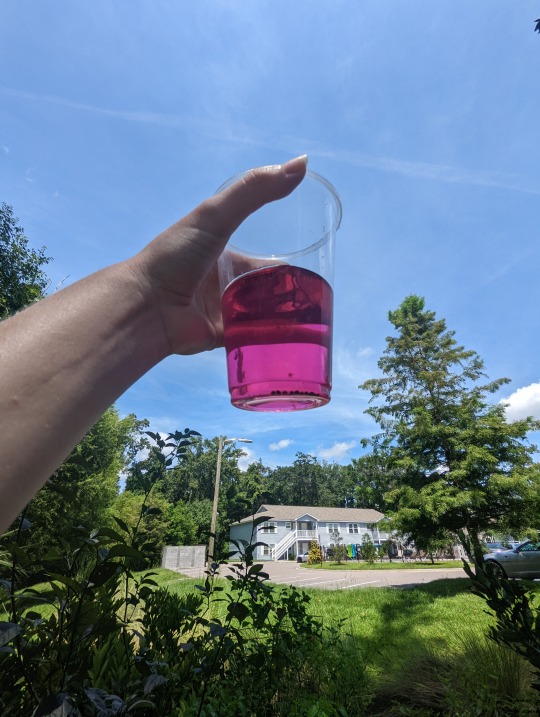
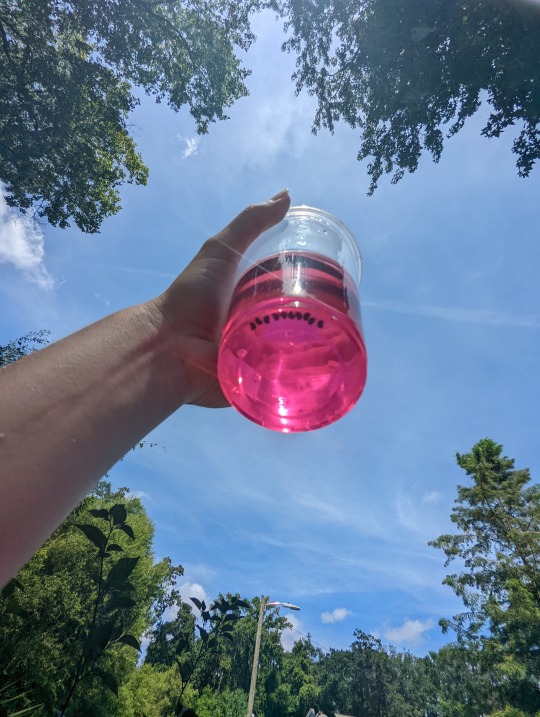
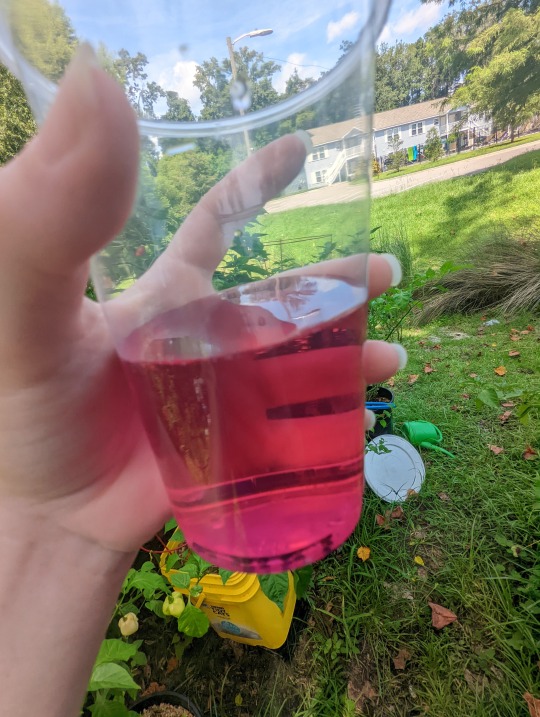
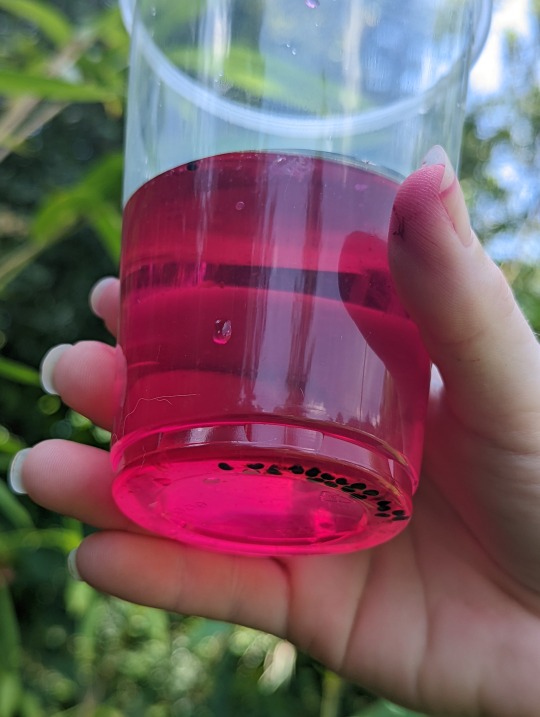
[ID: 21 photos split into groups of three, with each set of pictures taken with a different camera, and showing slightly different colors and levels of detail.
Each photo shows a white hand holding a clear plastic cup that is slightly less than half-filled with a clear magenta liquid, with small, dark, bean-shaped seeds in the bottom.
The first set of seven pictures shows the liquid as reddish, with a white wooden porch and a view overlooking a parking lot in the background.
The second set of eight photos shows the liquid much more pink in color, with first a white wall, then the same parking lot in the background.
The last set of six photos shows the liquid in various shades, ranging from purple-pink, to reddish, to red-pink. The sky and a garden are visible in the background.
End ID.]
the pokeberry + water, pictures taken with three different camera. None of them get the color right. It's so bright magenta it doesn't even look real.
This is my attempt to save the seeds from the variegated pokeweed plant we rescued last year, I used a plastic cup so that it can be thrown away afterwards (or at least marked and used only for this) since pokeweed is literally deadly poisonous to people.
I want to see if any of the seedlings, assuming I manage to get any to sprout (but I mean, it's probably not that difficult, right?) are also variegated.
Birds and some other animals eat the berries, which is why we're growing it in the first place. Also, it's pretty.
1 note
·
View note
Text
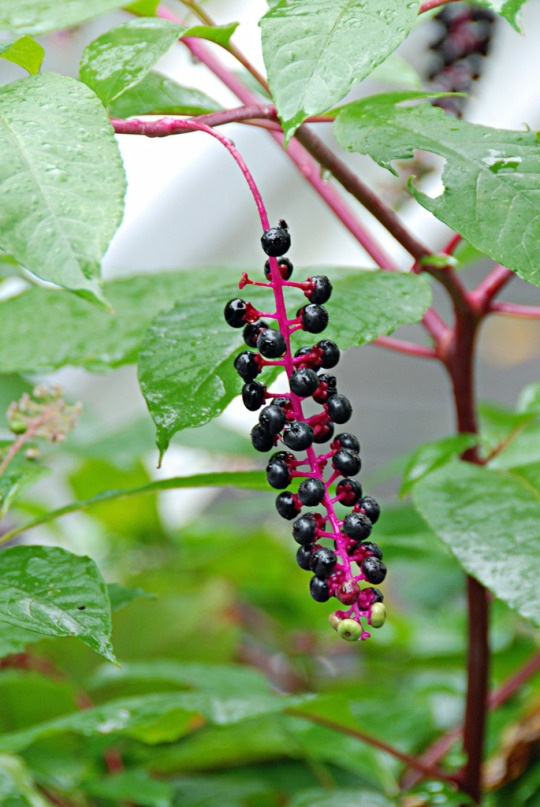
New Plant!
1. American Pokeweed.
0 notes
Photo
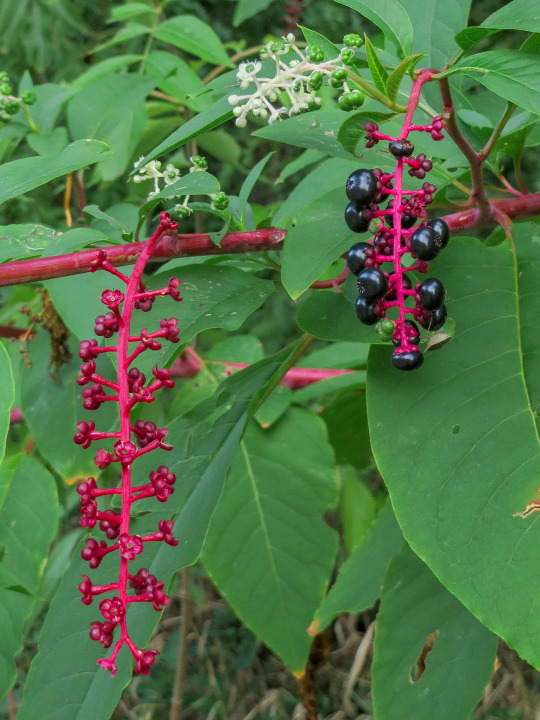
Scientific Name: Phytolacca americana
Common Name(s): American pokeweed
Family: Phytolaccaceae (pokeweed)
Life Cycle: Perennial
Leaf Retention: Deciduous
Habit: Forb
USDA L48 Native Status: Native
Location: Allen, Texas
Season(s): Summer
Toxic plant. Flowers and fruits in various stages of development.
#Phytolacca americana#American pokeweed#Phytolaccaceae#perennial#deciduous#forb#native#Allen#Texas#summer#flower#fruit#red#black#poisonous plants#toxic plants#plantblr
1 note
·
View note
Text
Man people are wild for being able to identify plants/mushrooms and just picking and eating them. The stages of absolute fear I would go through even if I knew 100% what it was like I could never
#says me who regularly picks up poisonous/venomous animals#and least theyre easy to tell apart#ive been trying to get into being able to identify plants and mushrooms#its going very bad#ive got the american pokeweed on lockdown#but mostly because its poisonous and i used to finger paint with the berries as a kid#which i think explains a lot tbh#don't mind me
7 notes
·
View notes
Text
Wildflower Walk ?
Hello everyone! I hope this post finds you all well. I apologize for not posting for a while. It has been a weird summer for sure with the heat and drought. I was busy with the garden picking sweet corn and green beans right up until August 17. Somehow I managed to get 455 ears of sweet corn in the freezer, and thanks to the ‘Provider’ green beans, 34 quarts of green beans. Of course, not all the…
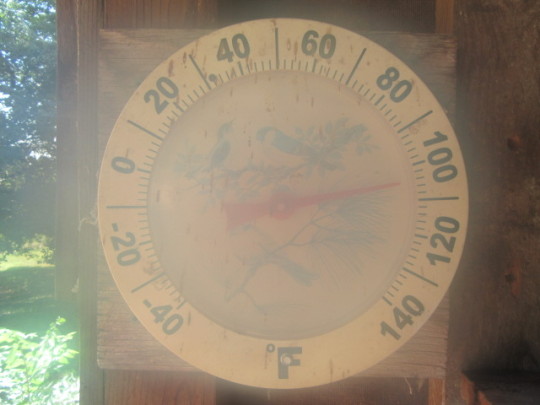
View On WordPress
#Ambrosia bidentata (Lanceleaf Ragweed)#Asclepias hirtella (Prairie/Tall Green Milkweed)#Asclepias syriaca (Common Milkweed)#Bidens aristosa (Tickseed Sunflower or Bearded Beggarticks)#Datura stramonium (Jimson Weed)#Elephantopus carolinianus (Leafy Elephant&039;s Foot)#Erechtites hieraciifolius (Fireweed/Pilewort)#Erigeron annuus (Annual or Daisy Fleabane)#Etc.)#Eupatorium serotinum (Late Boneset)#Impatiens capensis (Jewelweed)#Lespedeza cuneata (Chinese Bushclover)#Persicaria hydropiper (Water Pepper)#Persicaria pensylvanica (Pinkweed)#Phytolacca americana (American Pokeweed)#roton capitatus (Hogwort/Woolly Croton/Goatweed)#Rudbeckia hirta (Black-Eyed Susan)#Sida spinosa (Prickly Fanpetals)#Solanum sarrachoides (Hairy Nightshade)#Solidago sp. (Goldenrod)#Symphyotrichum lateriflorum (Calico Aster)#Tridens flavus (Purpletop#Tripsacum dactyloides (Eastern Gamagrass)#Verbesina virginica (White Crownbeard/Frostweed)#Vernonia missurica (Missouri Ironweed)
0 notes
Text
What i've been learning thru my research is that Lawn Culture and laws against "weeds" in America are deeply connected to anxieties about "undesirable" people.
I read this essay called "Controlling the Weed Nuisance in Turn-of-the-century American Cities" by Zachary J. S. Falck and it discusses how the late 1800's and early 1900's created ideal habitats for weeds with urban expansion, railroads, the colonization of more territory, and the like.
Around this time, laws requiring the destruction of "weeds" were passed in many American cities. These weedy plants were viewed as "filth" and literally disease-causing—in the 1880's in St. Louis, a newspaper reported that weeds infected school children with typhoid, diphtheria, and scarlet fever.
Weeds were also seen as "conducive to immorality" by promoting the presence of "tramps and idlers." People thought wild growing plants would "shelter" threatening criminals. Weeds were heavily associated with poverty and immortality. Panic about them spiked strongly after malaria and typhoid outbreaks.
To make things even wilder, one of the main weeds the legal turmoil and public anxiety centered upon was actually the sunflower. Milkweed was also a major "undesirable" weed and a major target of laws mandating the destruction of weeds.
The major explosion in weed-control law being put forth and enforced happened around 1905-1910. And I formed a hypothesis—I had this abrupt remembrance of something I studied in a history class in college. I thought to myself, I bet this coincides with a major wave of immigration to the USA.
Bingo. 1907 was the peak of European immigration. We must keep in mind that these people were not "white" in the exact way that is recognized today. From what I remember from my history classes, Eastern European people were very much feared as criminals and potential communists. Wikipedia elaborates that the Immigration Act of 1924 was meant to restrict Jewish, Slavic, and Italian people from entering the country, and that the major wave of immigration among them began in the 1890s. Almost perfectly coinciding with the "weed nuisance" panic. (The Immigration Act of 1917 also banned intellectually disabled people, gay people, anarchists, and people from Asia, except for Chinese people...who were only excluded because they were already banned since 1880.)
From this evidence, I would guess that our aesthetics and views about "weeds" emerged from the convergence of two things:
First, we were obliterating native ecosystems by colonizing them and violently displacing their caretakers, then running roughshod over them with poorly informed agricultural and horticultural techniques, as well as constructing lots of cities and railroads, creating the ideal circumstances for weeds.
Second, lots of immigrants were entering the country, and xenophobia and racism lent itself to fears of "criminals" "tramps" and other "undesirable" people, leading to a desire to forcefully impose order and push out the "Other." I am not inventing a connection—undesirable people and undesirable weeds were frequently compared in these times.
And this was at the very beginnings of the eugenics movement, wherein supposedly "inferior" and poor or racialized people were described in a manner much the same as "weeds," particularly supposedly "breeding" much faster than other people.
There is another connection that the essay doesn't bring up, but that is very clear to me. Weeds are in fact plants of the poor and of immigrants, because they are often medicinal and food plants for people on the margins, hanging out around human habitation like semi-domesticated cats around granaries in the ancient Near East.
My Appalachian ancestors ate pokeweed, Phytolacca americana. The plant is toxic, but poor people in the South would gather the plant's young leaves and boil them three times to get the poison out, then eat them as "poke salad." Pokeweed is a weed that grows readily on roadsides and in vacant lots.
In some parts of the world, it is grown as an ornamental plant for its huge, tropical-looking leaves and magenta stems. But my mom hates the stuff. "Cut that down," she says, "it makes us look like rednecks."
9K notes
·
View notes
Text
February 2nd, 2024


Thick-legged Hoverfly (Syritta pipiens)
Distribution: Native to Europe, but found throughout Eurasia and North America.
Habitat: Occur wherever there are flowers, but most common around human habitations; common habitats include farmland, gardens and parks. Larvae are most common in rotting organic matter such as compost, manure, silage, and occasionally cadavers.
Diet: Larvae feed on decaying organic matter, while adults feed on many types of flowers. Their most common food plants are water-willow, white vervain, American pokeweed and candyleaf.
Description: The thick-legged hoverfly is called so due to their overdeveloped hind legs. These insects can sometimes be pests, as they occasionally feed on ornamentals, but are generally considered beneficial because they pollinate many common flower species. They also act as bio-indicators, especially to demonstrate the effects of environmental changes on pollinators.
Hoverflies are very agile fliers, and are often found hovering near flowers. This species, however, is very rarely found flying more than a metre above ground level. When they encounter another fly, males will sometimes circle around them; if they're male, this often results in the two males circling eachother, and if they're female, the male may dive at her at an acceleration of up to 500 centimetres per second squared in an attempt to initiate copulation.
Images by Joaquim Alves Gaspar and Stephen Luk.
65 notes
·
View notes
Text

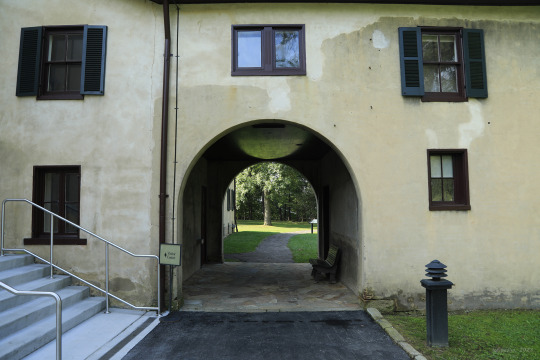
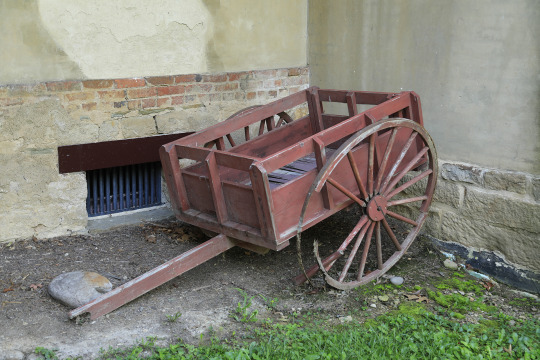


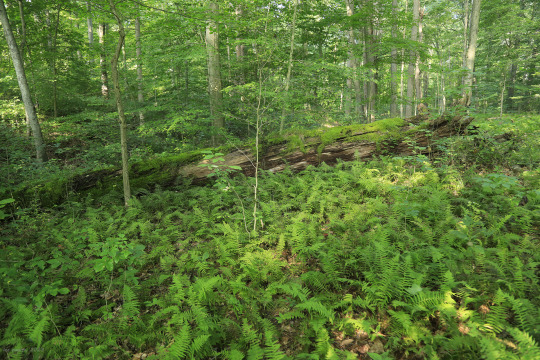

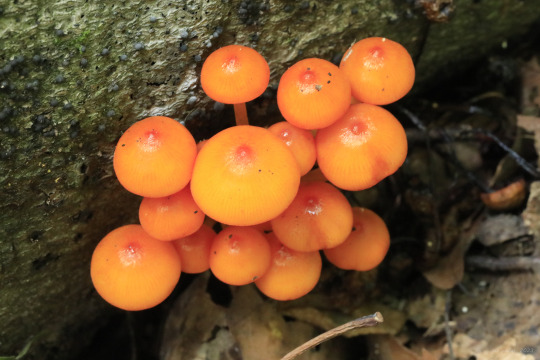
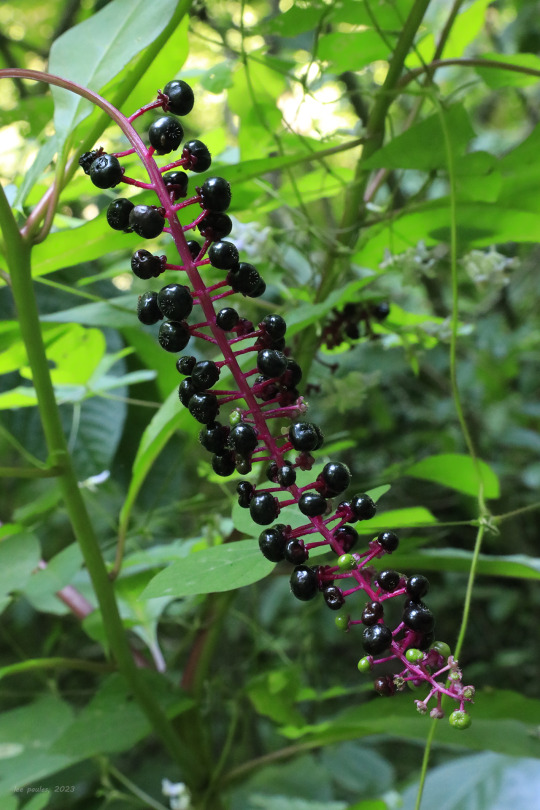
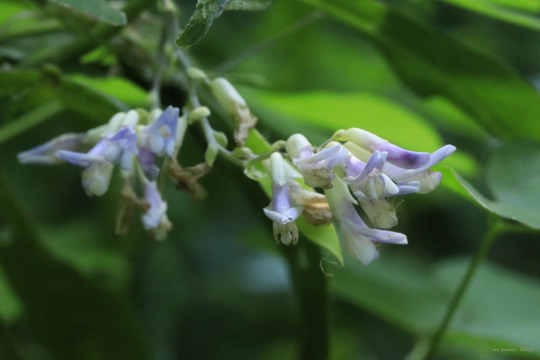

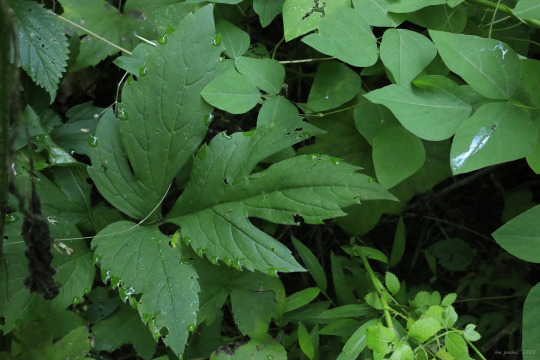
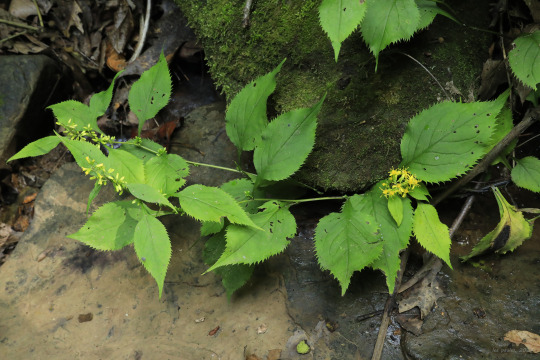
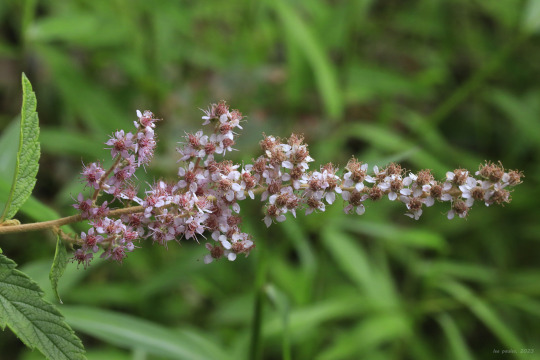
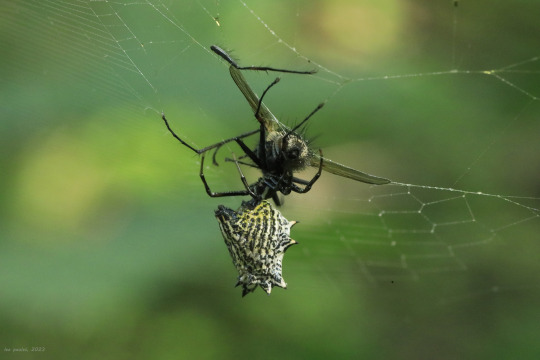

A few photos above from an early morning hike at the Friendship Hill National Historic Site near Pt. Marion, Pennsylvania. If you want to learn more about the history of this sprawling estate, you can go to this link or search for prior posts from the main search page of my Tumblr blog. In addition to the historic homestead of Albert Gallatin, the park features ten miles of hiking trails through verdant oak-hickory and riparian forests. This time of year, the Central Appalachian forest is rich with fungi, legumes, berries, and the loveliest orb-weavers imaginable.
From top: wingstem (Verbesina alternifolia), also known as yellow ironweed, a late summer aster so named because the petioles of its leaves run down the plant's stem; northern spicebush (Lindera benzoin), a gorgeous native shrub whose bright red berries in late summer are followed by the most extraordinary gold foliage in the fall; orange mycena (Mycena leaiana), a lovely, gregarious fungi of deciduous logs whose pigment has shown antibacterial and anti-cancer properties; the ripened but dangerously toxic berries of pokeweed (Phytolacca americana), whose young leaves are used by mountain folk to make poke sallet (but only after repeated cleansings to remove the toxins); American hog-peanut (Amphicarpaea bracteata), a lovely twining vine whose roots and ground nut are edible; cutleaf coneflower (Rudbeckia laciniata), also known as green-headed coneflower and wild goldenglow, a close relative of black-eyed Susan with gorgeous, pinnately-dissected leaves (the leaf photo also shows the characteristic tri-foliate leaf pattern of hog-peanut); zig-zag goldenrod (Solidago flexicaulis), one of two adorable woodland goldenrods that grow in this area (the other being blue-stemmed goldenrod), both of which produce clusters of brilliant yellow flowers in both their leaf axils and at the ends of their stems; steeplebush (Spiraea tomentosa), also known as hardhack, which produces delicate plumes of pink flowers in late summer; a spined micrathena (Micrathena gracilis), which has ensnared a fly in her web; and an arrowhead orb weaver (Verrucosa arenata), also known as a triangle orb-weaver, a sparkling gem of an arachnid that reels in its prey like a fisherman dragging in a net.
#appalachia#vandalia#wildflowers#flora#summer#arachnid#pennsylvania#friendship hill national historic site#fungi#orange mycena#wingstem#yellow ironweed#northern spicebush#pokeweed#american hog-peanut#cutleaf coneflower#green-headed coneflower#wild goldenglow#zig-zag goldenrod#steeplebush#hardhack#orb-weaver#spider#spined micrathena#arrowhead orb-weaver#triangle orb-weaver
23 notes
·
View notes
Text
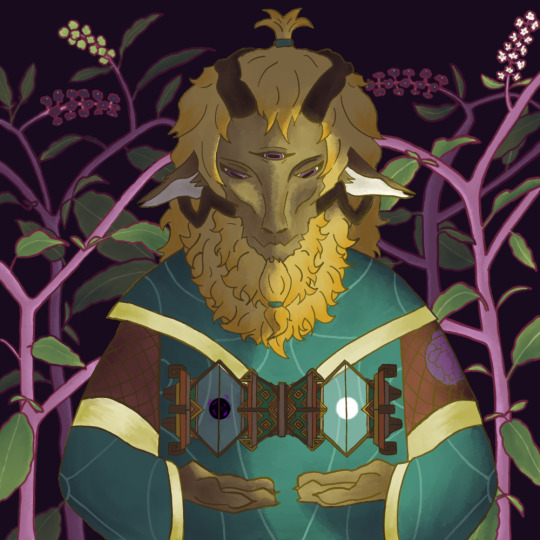
"I have Clary and Root in the forge, and I have my clan. I am not alone!"
Phytolacca americana - American pokeweed
136 notes
·
View notes
Photo

American Pokeweed by Laurianne Henry on Flickr.
This work is licensed under CC BY 3.0.
#american pokeweed#Phytolacca americana#fruit#landscape#wild#green#creativecommonsplants#plants#plant blog#plant photography#curators on tumblr#creative commons#botany#flickr
8 notes
·
View notes
Text
Southern U.S herbs and Plants for Witchcraft (revised)

This is a compilled list of localized herbs and plants for witchcraft I have found in the Southern U.S. Some I have listed are poisonous, but ofc do your own research to see which is poisonous or not. Do not go strictly based on what I have written.
Poisonous Herbs:
• Flowering Dogwood
• Man of the Earth Morning Glory
• American Holly
• Eastern Red Cedar
• Pokeweed
• Oak Tree
- Carries Acorns
• Hairy Skullcap
• Florida skullcap
• Paw Paw
• Grape Hyacinth
Non Poisonous:
• Passionflower
• True Dandelion
• Common Honeysuckle
• Common Blue Violet
• Wood Sorrel (Invasive)
• Purple Dead Nettle (Invasive)
• Red Clover (Invasive)
• White Clover (Invasive)
• Sweet Gum
-Carries Witches Burrs
• Pine Tree
-Carries Cones
• Elder Flower
• Thistle
• River Cane Bamboo
• Wood Nettle
• Black Nightshade
• Brambleberries aka Blackberry
• Speedwell
• Pecan Tree
- Carries Pecans
• Texas Thistle
• American Beautyberry
• Yarrow
• Trumpet Honeysuckle
• Eastern daisy fleabane
• Cornflower (Introduced)
• American hazelnut
• Mountain mint
• Prickly Pear
• Beebalm
20 notes
·
View notes
Text
Recently, while visiting me in Brooklyn, my mom’s eyes went twinkly as she noticed all the wild pokeweed growing around the neighborhood. A woolgathering reminiscence of her childhood in Texas spilled forth: cooking and eating the onion-infused greens straight from the pan; her stoic anticipation as her mother added vinegar to the last dregs of poke-broth, knocking it back like a shot of whiskey.
She was surprised to find that my New England–bred boyfriend had never heard of the poisonous, towering perennial weed, with its oblong leaves and magenta berries and stalks. Despite the fact that the kudzu-like Phytolacca americana sprouts up all across North America, poke sallet, a dish made from the plant’s slightly-less-toxic leaves, is a regional thing, popular only to Appalachia and the American South. The leaves must be boiled in water three times to cook out their toxins, and, as aficionados will tell you, it’s well worth the extra effort.
But if pokeweed is so toxic, why did people start eating it in the first place? In a word, poke sallet is survival food.
16 notes
·
View notes
Photo
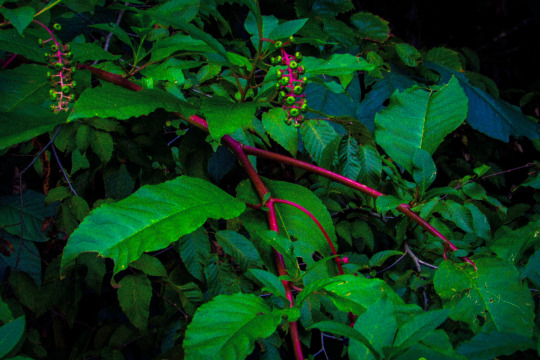
American Pokeweed
65 notes
·
View notes